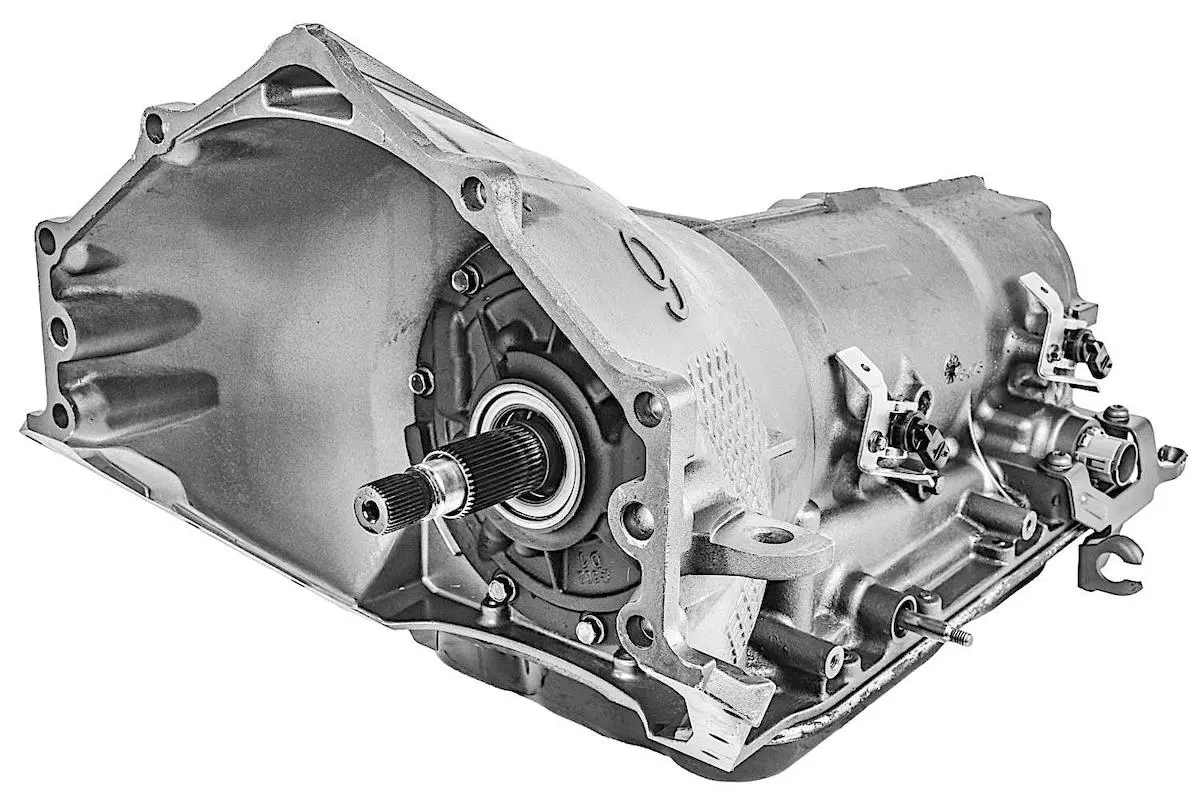The Throttle Position Sensor (TPS) is a pivotal component in modern vehicle engines, playing a critical role in regulating and optimizing the engine’s performance. This sensor is an electronic device that monitors the position of the throttle valve relative to the engine’s control unit. Its primary function is to relay information about the throttle’s position to the engine control module (ECM), enabling the ECM to make necessary adjustments in fuel delivery and air intake, ensuring optimal engine operation.
Definition and Function of Throttle Position Sensor

The Throttle Position Sensor, as the name suggests, detects and reports the throttle valve’s position to the vehicle’s onboard computer. The throttle valve controls the amount of air entering the engine. By measuring the angle of the throttle plate, the TPS determines how much power is needed by the engine at any given moment.
The TPS operates through a simple yet effective mechanism. It generally consists of a sensor and a variable resistor or potentiometer, which transform the throttle valve’s movement into an electronic signal. This signal is then transmitted to the engine control module, allowing the vehicle’s computer to make adjustments to the air-fuel mixture and engine speed as needed.
Also Read: Are You Ignoring Signs? Explaining The Symptoms Of A Loose Spark Plug
Importance of TPS in Vehicle Performance
The TPS plays a crucial role in the overall performance of the vehicle. It directly influences various operational aspects of the engine, including:
-
Acceleration Control
The TPS regulates the engine’s acceleration responsiveness. The sensor communicates the driver’s throttle inputs to the engine control module, allowing the vehicle to accelerate smoothly and efficiently.
-
Fuel Efficiency
By providing real-time feedback on the throttle valve’s position, the TPS assists in optimizing the air-fuel mixture. This precision ensures efficient fuel consumption and reduces emissions, contributing to better overall fuel economy.
-
Engine Idling
Proper idling is crucial for the vehicle’s stability and performance at rest. The TPS helps maintain the right engine idling speed by signaling the control unit, preventing stalling or rough idling.
-
Transmission Shifting
The TPS is also involved in transmission control, helping in gear shifting. It aids in determining the proper gear to be engaged based on the throttle position and engine load, ensuring smooth shifting.
-
Check Engine Light Management
A malfunctioning TPS can trigger the Check Engine Light on the dashboard. Hence, a properly functioning sensor is vital to prevent potential issues or damage to the engine.
The Throttle Position Sensor’s function is integral to the smooth operation of the engine, influencing various parameters crucial for efficient vehicle performance. Thus, any problems arising with the TPS can significantly impact the vehicle’s drivability and overall functionality.
Signs of a Faulty Throttle Position Sensor
The Throttle Position Sensor (TPS) is an essential component of a vehicle’s engine management system. A malfunctioning TPS can lead to a variety of symptoms that affect the car’s performance and drivability. Understanding the signs indicating a faulty TPS is vital for prompt detection and resolution of issues. Here are the prominent signs:
-
Check Engine Light Illumination
When the Check Engine Light appears on the dashboard, it’s a primary indicator of a potential issue within the vehicle’s system. The TPS is continuously monitored by the engine control module. If the sensor fails or sends irregular data, it triggers the Check Engine Light to alert the driver to a potential problem with the TPS. Scanning the vehicle’s onboard computer can provide specific trouble codes, often associated with the TPS, such as P0120, P0122, P0123, or P0124.
-
Changes in Acceleration and Power
A faulty TPS can lead to unusual and erratic changes in acceleration and engine power. Drivers might experience hesitations during acceleration, delayed gear shifting, or a noticeable decrease in engine power. This is due to the TPS’s inability to accurately gauge the throttle position, resulting in a lack of proper fuel delivery and air intake, which significantly impacts the vehicle’s power and responsiveness.
-
Fuel Economy Decline
A malfunctioning TPS can affect the air-fuel mixture, leading to a substantial decrease in fuel efficiency. As the TPS regulates the air intake, a faulty sensor might send inaccurate signals to the engine control module, causing the engine to operate with an improper air-fuel mixture. This results in inefficient fuel combustion and poor mileage, directly impacting the vehicle’s fuel economy.
-
Idling Issues: Stalling, Surging, or Hesitation
Issues related to idling, such as stalling, surging, or hesitation when the vehicle is at a stop or moving at a slow speed, often indicate a problem with the TPS. An irregular or incorrect signal sent by the TPS to the engine control module can cause unstable idling. It can lead to the engine stalling unexpectedly, surging while at a stop, or hesitation when trying to accelerate from a standstill.
These signs, individually or collectively, are indicators of a faulty Throttle Position Sensor. If you experience any of these symptoms, it’s crucial to address the issue promptly to prevent further damage to the engine and ensure the vehicle operates optimally.
When to Reset the Throttle Body Sensor
Resetting the Throttle Position Sensor (TPS) is often necessary to address irregularities and restore optimal performance in a vehicle. Here’s a comprehensive exploration of when it’s crucial to reset the TPS:
Critical Scenarios for TPS Reset
- Check Engine Light Activation
Whenever the Check Engine Light illuminates on the dashboard, signaling potential issues within the vehicle, it’s advisable to perform a TPS reset. This reset could rectify any discrepancies in the sensor’s calibration that might have triggered the warning.
- Acceleration and Power Changes
Instances of reduced power, hesitations, or delayed gear shifting during acceleration often signal TPS problems. Resetting the TPS in these cases could re-establish proper functionality and ensure smooth acceleration.
- Fuel Economy Decline
A noticeable drop in fuel efficiency might indicate an air-fuel ratio imbalance caused by a malfunctioning TPS. Resetting the sensor might help restore the correct air-fuel mixture, hence enhancing fuel efficiency.
- Idling Problems
If the vehicle experiences idling issues like stalling, surging, or hesitation, a TPS reset can often resolve these problems. It recalibrates the sensor to accurately read the throttle position, ensuring consistent and stable idling.
Importance of Timely TPS Reset
Performing a reset for the Throttle Position Sensor in a timely manner holds significant importance in maintaining optimal vehicle performance:
- Engine Health
Timely TPS resets help maintain the engine’s health by ensuring the correct air-fuel mixture. A correctly calibrated TPS reduces the likelihood of engine misfires, ensuring smoother and efficient combustion.
- Drivability and Safety
A well-functioning TPS is crucial for smooth acceleration, which directly affects drivability. A reset, when necessary, ensures a consistent throttle response, promoting safe and predictable driving experiences.
- Preventive Maintenance
Regularly resetting the TPS prevents the accumulation of incorrect throttle position data, thereby extending the lifespan of the sensor and other engine components.
- Avoiding Further Issues
Ignoring TPS problems could lead to other issues in the engine, negatively impacting other vital systems like the ignition, air conditioning, and fuel efficiency. A reset prevents such complications.
Methods Of How To Reset Throttle Body Sensor
Resetting the Throttle Position Sensor (TPS) can be achieved through several methods, each intended to recalibrate and restore the sensor’s functionality. Below are the various approaches used for resetting the TPS:
-
Using an OBD2 Scanner
An OBD2 scanner is one of the most efficient and modern methods to reset the TPS. Choose an OBD2 scanner compatible with your vehicle model and equipped with a TPS reset feature. This scanner allows for accurate and automated recalibration, providing a simple solution to TPS issues.
-
Pushing the Accelerator Pedal Method
- Turn the vehicle on without starting the engine.
- For keyless start systems, push the ignition button without engaging the engine.
- Keep the key or button in the ‘on’ position.
- Depress the accelerator pedal, holding it down for approximately 20 seconds. Ensure the pedal reaches its maximum travel limit.
- Gradually release the pedal and turn off the vehicle.
- Start the engine normally and take a test drive to check for improvements in performance.
-
Removing the Fuse Method
- Refer to your vehicle’s owner’s manual to identify the fuse linked to the TPS.
- Remove the identified fuse and leave it disconnected for roughly 10 minutes.
- After this time, reinsert the fuse into its socket. The TPS should reset itself.
-
Disconnecting the Battery Method
- Safely disconnect the negative cable from the vehicle’s battery.
- Wait for approximately 5 minutes to ensure the discharge of residual power in the car’s system.
- Reconnect the negative cable.
- Turn the ignition key to the electric position without starting the engine.
- Depress the gas pedal slowly to the floor, hold it for a few seconds, and gradually release it. Repeat this process three times.
- Finally, turn the ignition key to the ‘off’ position and remove the key from the ignition.
Alternative Methods and FAQs
Additional methods might include a combination of resetting the TPS by draining residual power from the vehicle, idling the engine for a specified duration, or consulting the service manual for specific procedures suitable for your vehicle.
FAQs
What Codes Can a Throttle Position Sensor Cause?
A faulty TPS can trigger various trouble codes when scanned, such as P0120, P0122, P0123, and P0124.
What Will a Bad Throttle Position Sensor Do?
An impaired TPS can negatively impact the engine’s performance, resulting in idling issues, poor acceleration, or a decrease in fuel economy.
What’s the Easiest Way to Reset my Throttle Position Sensor?
Disconnecting the negative battery cable for approximately five minutes is one of the easiest methods to reset the TPS.
Step-by-Step Guide for Throttle Position Sensor Reset
Restoring your vehicle’s Throttle Position Sensor (TPS) involves a systematic process to recalibrate its functionality. Below is a detailed step-by-step guide for each resetting method, along with essential precautions and considerations:
-
Using an OBD2 Scanner
Select Compatible Scanner:
- Choose an OBD2 scanner compatible with your vehicle’s make and model.
- Ensure the scanner has a TPS reset feature.
Connect the Scanner:
- Locate the vehicle’s OBD2 port (usually under the dashboard).
- Plug in the scanner and follow the device’s instructions.
Access TPS Reset Feature:
- Access the scanner’s menu to select the TPS reset function.
- Follow the on-screen instructions to execute the reset.
-
Pushing the Accelerator Pedal Method
Prepare for Reset:
- Turn the vehicle to the ‘on’ position without starting the engine.
- For keyless start systems, press the ignition button without starting the engine.
Pedal Depressing Process:
- Keep the key or button in the ‘on’ position.
- Depress the accelerator pedal and hold it for about 20 seconds, allowing it to reach its maximum position.
Complete Reset:
- Gradually release the accelerator pedal.
- Turn off the vehicle and wait for a few seconds.
- Start the engine and take a test drive to check for performance improvements.
-
Removing the Fuse Method
Find the TPS Fuse:
- Refer to the vehicle’s owner’s manual to locate the TPS-related fuse.
Disconnect the Fuse:
- Remove the identified fuse connected to the TPS.
- Keep the fuse disconnected for approximately 10 minutes.
Reinsert the Fuse:
- Reinsert the fuse into its socket after 10 minutes.
- The TPS should reset automatically after the reinsertion.
-
Disconnecting the Battery Method
Safety Precautions:
- Safely disconnect the negative cable from the vehicle’s battery.
Waiting Period:
- Wait for roughly 5 minutes to discharge residual power.
Battery Reconnection:
- Reconnect the negative cable to the battery.
- Electrically turn the ignition on without starting the engine.
Accelerator Pedal Reset:
- Slowly depress the gas pedal to the floor, holding it for a few seconds.
- Release the pedal and repeat this process three times.
Finishing Reset:
- Turn the ignition off and remove the key.
Considerations and Precautions:
- Ensure you follow proper safety protocols while performing these methods.
- Check the owner’s manual for vehicle-specific instructions.
- Avoid disruptions to any vehicle settings during the reset.
- Take caution with electrical components during battery disconnection.
FAQs about Throttle Position Sensor Resetting
What error codes indicate a faulty Throttle Position Sensor (TPS)?
A malfunctioning TPS can trigger diagnostic trouble codes, including P0120, P0122, P0123, and P0124. These codes usually appear when scanning the vehicle’s computer system.
What are the consequences of a malfunctioning Throttle Position Sensor?
A defective TPS can significantly impact engine performance, leading to erratic idling, sluggish acceleration, or difficulty gaining speed. The engine might idle normally but struggle to respond when you accelerate. It might also experience fuel inefficiency, hindering overall driving performance.
What is the simplest method to reset a Throttle Position Sensor?
The easiest approach to reset the TPS is by disconnecting the negative cable from the vehicle’s battery for approximately five minutes. This method is straightforward and often effective in triggering a TPS reset, but it also results in a complete reset of the car’s electronics.
Other FAQs
How do I reset my throttle body?
To reset the throttle body, you can use various methods. The most common methods include using an OBD2 scanner, pushing the accelerator pedal, removing the fuse connected to the throttle body, disconnecting the battery, or following specific manufacturer-guided procedures.
What happens if you disconnect the throttle position sensor?
Disconnecting the throttle position sensor can result in various issues. The engine may stall or have difficulties starting. This action might also trigger the Check Engine Light to illuminate and prompt the vehicle to enter a default mode to ensure safety.
What causes a throttle body sensor to fail?
Several factors can lead to a throttle body sensor failure, including accumulated dirt and carbon, electrical or wiring issues, wear and tear over time, exposure to extreme temperatures or contaminants, or a disrupted signal between the TPS and the vehicle’s control module.
Do you have to reset throttle body sensor?
Resetting the throttle body sensor is often necessary after a replacement or when issues arise with the TPS. It can help the vehicle’s computer recalibrate and relearn settings. Resetting may resolve certain problems, but it’s essential to ensure proper diagnosis of any underlying issues causing the need for a reset.
Conclusion
The Throttle Position Sensor (TPS) serves as a vital component within a vehicle’s intricate system, monitoring the throttle valve’s openness and regulating the air entering the engine. Its role directly impacts engine performance, and detecting signs of a faulty TPS, such as the Check Engine Light, changes in acceleration, fuel economy decline, or idling issues, is crucial to a vehicle’s smooth operation.
Resetting the Throttle Body Sensor can address TPS-related issues, and employing different methods, including the use of an OBD2 scanner, accelerator pedal manipulation, fuse removal, or battery disconnection, can recalibrate the sensor.
Ensuring timely and accurate TPS reset is critical in safeguarding the vehicle’s performance, preventing potential engine wear, misfires, or hazardous driving conditions. When confronted with TPS-related symptoms, promptly initiating a reset can mitigate any damage and aid in restoring optimal vehicle functionality.
Regular maintenance and periodic checks on the TPS are paramount to ensure sustained vehicle performance and longevity. Addressing TPS issues as soon as they arise can prevent severe damage, maintain fuel efficiency, and ensure a safer driving experience.
Remember, before conducting any maintenance or reset, following manufacturer guidelines and seeking professional assistance when in doubt is highly recommended to ensure proper diagnosis and safe execution of the reset procedures. A well-maintained TPS ensures your vehicle continues to operate at its best and avoids any unwarranted issues.




